Summer
Summer is the warmest of the seasons. In the summer, the Earth is angled towards the Sun so that one hemisphere gets more sunlight.
In the northern hemisphere, the summer months are June, July and August. In the southern hemisphere, the summer months are December, January and February.
Summer begins when the average temperature of the month is more than 10 degrees Celsius.
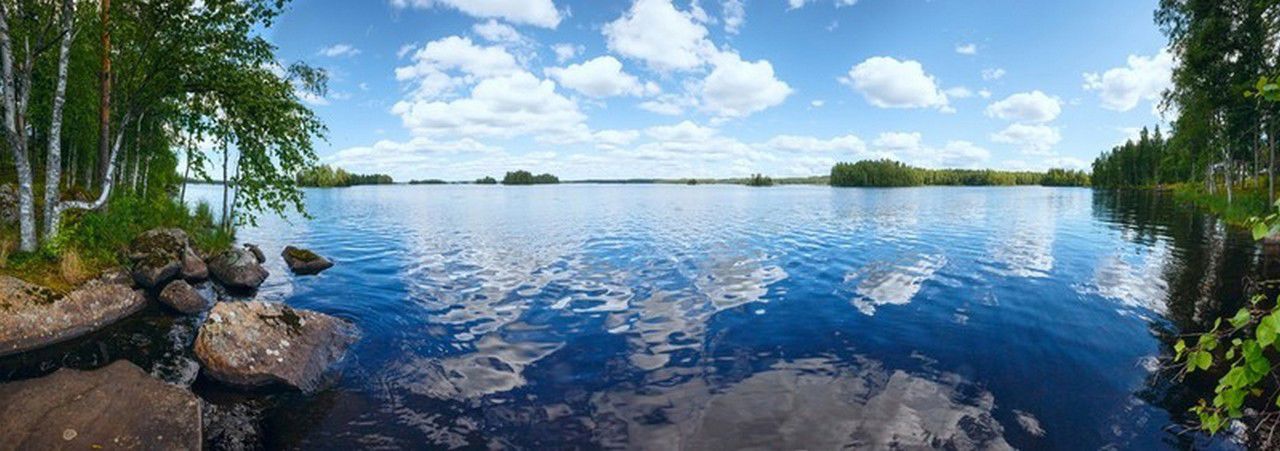
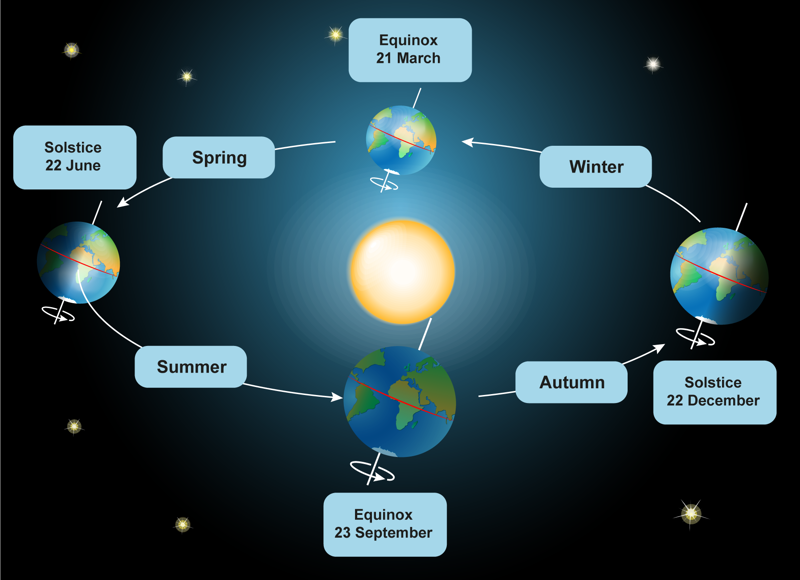
The elements of weather
When talking about weather, we mean the following four things:
- temperature
- clouds
- rain
- wind.
Together, these four things make up weather.
The picture on the right shows a rain front approaching. When it gets closer, the air temperature will drop, the sky will get cloudier, and the wind will get stronger.
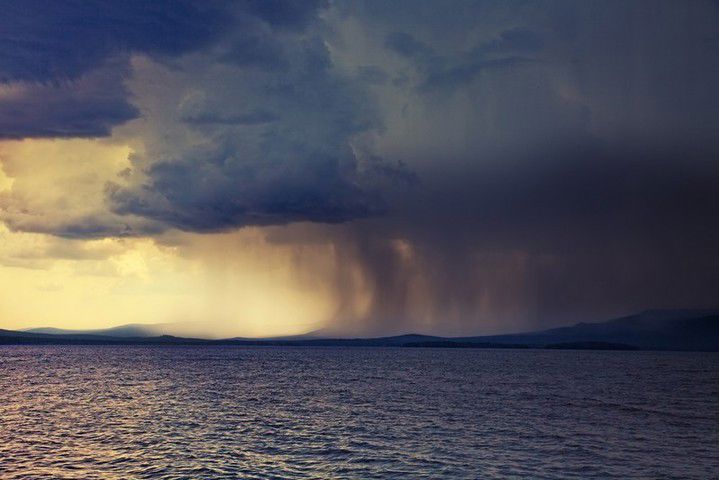
Weather factors
Temperature means how warm the air around us is. In the summer, the daily temperatures are at their highest. In the summer, the northern hemisphere receives more sunlight than in other seasons. Clouds and wind also affect temperature.
Clouds keep sunlight from warming the planet during the day. At night, they keep heat from evaporating into space, like a blanket. This is why clear summer nights are colder than cloudy summer nights.
Air currents, or winds, also affect air temperature. Air that flows in from the north is usually colder than air that flows in from the south.
Near sea shores, the maritime climate makes the air temperature warm up more slowly during the spring and cool down slowly during the autumn. This happens because sea water warms up and cools down more slowly than land.
In inland areas, the continental climate results in a colder winter and warmer summer.

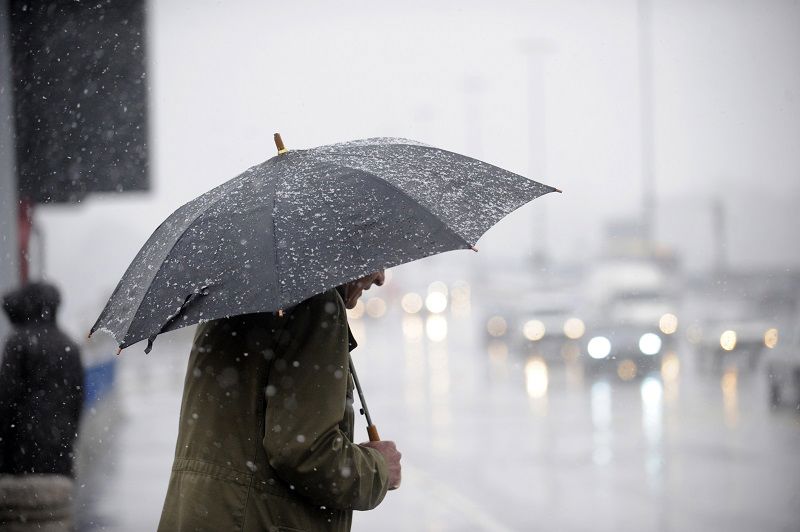
Rain
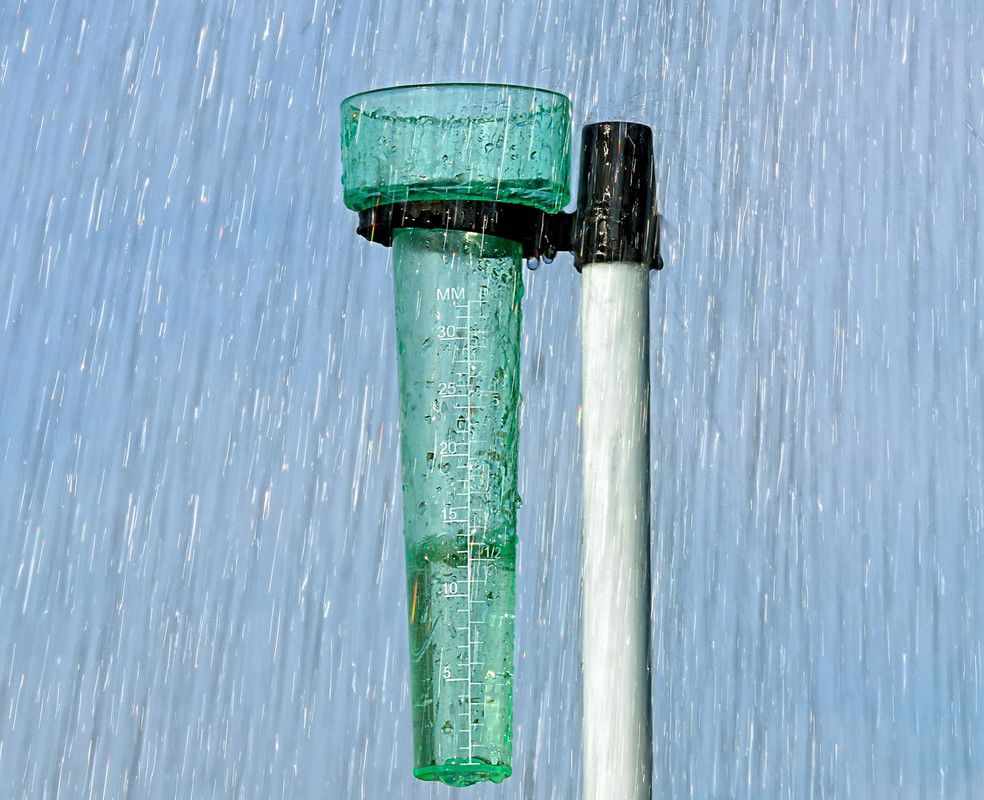
Rain is water that falls down to the Earth from clouds. Clouds are formed when the Sun heats up the surface of a lake or a sea. When this happens, the water begins to evaporate and rise up, forming clouds. When the water vapour becomes condensed in the upper atmosphere, it forms small droplets that begin to fall towards the ground.
Normal rain can be either heavy or light. Usually, the raindrops are of a normal size, and the rain can continue for several hours without stopping.
Drizzle rain consists of rain drops that are so small that they do not even cause ripples when they hit the surface of ponds or lakes. However, drizzle rain is still wet, and it can also prevent visibility.
Showers are rain that comes in short, heavy spurts. The raindrops are often large, and a large amount of water falls down in a short period of time. In a lightning shower, the rain shower is accompanied by a thunderstorm.
Sleet showers are rain showers where water falls down in the form of small pieces of ice called sleet. They can occur in the summer, especially during lightning showers.
Wind
Winds are formed when the Sun warms up Earth’s surface and the air above it. The warm air begins to rise, and new air flows to fill the space left by it. This flow is the wind.
Winds often lower the air temperature, as the new air that flows to replace warm air is usually cold. The flow of air itself also has a cooling effect. You can try this yourself by blowing air on the back of your hand.
Winds can sometimes be dangerous, especially in shore areas. Storms can make trees fall down and cause damage to buildings. The scientists that focus on studying and predicting the weather, meteorologists, try to warn people about storms and other dangerous weather conditions by issuing wind and storm warnings. In the summer, storms are often connected to thunder showers.
Wind speed is measured in metres per second (m/s). This unit describes how many metres the wind travels during the course of one second.
Wind speeds
Speed (m/s) | Description |
0–3 | Weak wind |
4–7 | Intermediate wind |
8–13 | Swift wind |
14–20 | Hard wind (wind warning) |
21–24 | Storm (storm warning) |
25–28 | Heavy storm (storm warning) |
29–32 | Severe storm (storm warning) |
>32 | Cyclone, hurricane, tornado |
Lightning
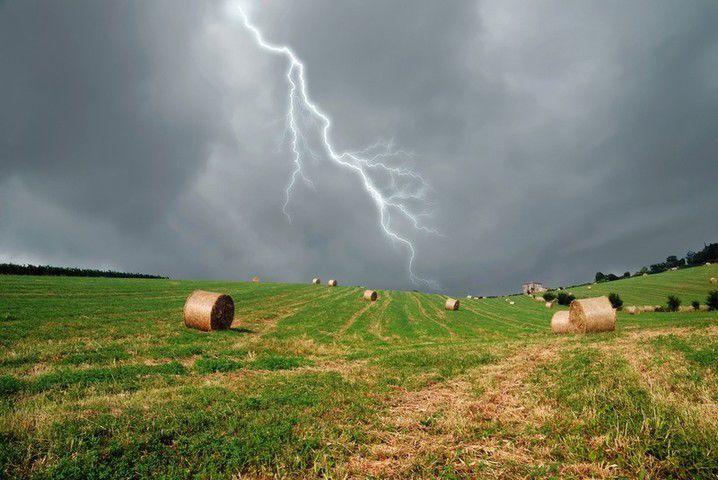
Lightning is a severe weather phenomenon where an electrical charge that has formed inside a thundercloud is released as a flash of light. Lightning can either hit another cloud or the ground.
During thunder and lightning storms, we often experience rain and heavy winds. The bolts of lightning that hit the ground can cause damage to trees, people and electrical equipment. Lightning tends to target tall objects, such as trees and tall buildings.
The sound of thunder can be heard for tens of kilometres, and the lightning can be seen even further away than that.
Why does the sound of thunder always arrive after the flash of lightning? This happens because sound travels more slowly than light. You can use this to measure the distance between yourself and the thunderstorm. If the lightning and the sound of thunder are separated by three seconds, the thunderstorm is located one kilometre from you.
Predicting the weather
Meteorologists are scientists that study and predict the weather. They make weather observations on different time scales and compare their observations with various weather prediction models. These models are based on weather data gathered over the course of long periods of time. Sometimes, weather can behave in unexpected ways and cause the prediction to be wrong.
Specialised equipment such as rain radars are used to make short-term weather predictions. Rain radars measure the movement of rain clouds and compare this with observations about wind speed. As a result, the meteorologist can predict when and where it will rain. These predictions are often quite reliable.
You can find meteorological weather predictions on the internet, in newspapers and on the radio and television. You can also try to predict weather yourself by making observations about various weather phenomena. For example, tall and dark clouds often indicate approaching rain fronts.
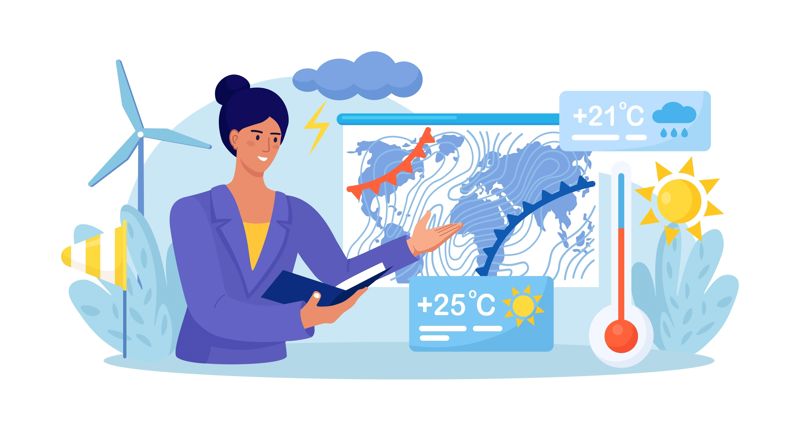
Terminology
Summer weather
Term | Explanation |
summer | The season with the warmest and longest days of the year. In terms of temperature, summer is considered to begin when the average daily temperature exceeds +10 degrees Celsius. |
wind | The flow of air in the Earth's atmosphere. |
maritime climate | The climate type of shore areas, characterised by a mild winter and a temperate summer. |
continental climate | The climate type of inland areas, characterised by a warm summer and cold winter. |
lightning | A weather phenomenon where the electric charges of thunder clouds are released in the form of light. |
Summary
- Summer weather is most affected by temperature and rainfall.
- Winds and clouds can have a big impact on daytime temperatures.
- Weather can be predicted scientifically.
